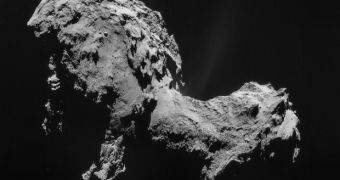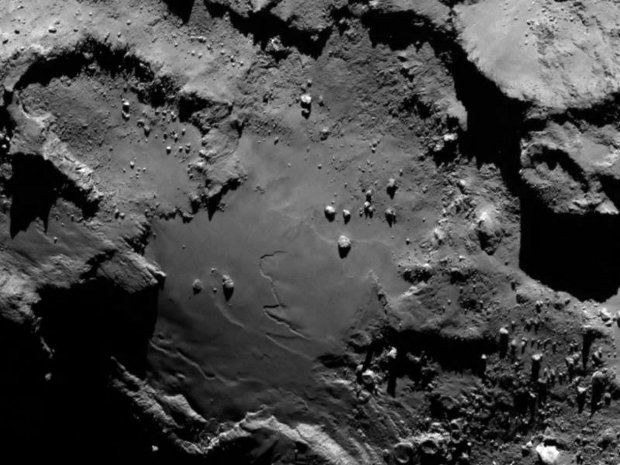Some time ago, in August 2014, the European Space Agency's Rosetta spacecraft at long last reached Comet 67P/Churyumov-Gerasimenko and successfully placed itself it its orbit.
The probe and its target orb are currently journeying together towards the inner Solar System. Latest news says that they are now about 198 million kilometers (123 million miles) from the Sun and moving at a speed of roughly 33 kilometers per second (20 miles per second).
Images and data delivered by the Rosetta spacecraft over the past few months indicate that Comet 67P/Churyumov-Gerasimenko is no ordinary space boulder. Au contraire, the orb displays several geological particularities that can only be described as puzzling.
For starters, the comet appears to sport a black crust that is rich in organic elements and that coats water ice deposits. Further, there is evidence of surface crater lakes, albeit frozen ones.
These features hint at the presence of alien life
The European Space Agency's Rosetta spacecraft was never intended to specifically search for alien life on Comet 67P/Churyumov-Gerasimenko. However, a team of scientists now say that the data and views it has so far beamed back to Earth hint that the orb might hide foreign microorganisms.
In a report released over the weekend, the researchers, Max Wallis of the University of Cardiff and Chandra Wickramasinghe with the Buckingham Center for Astrobiology, propose that the comet's odd appearance indicates that there is an abundance of microbial life thriving under its surface.
The astronomers also reference jets that the Rosetta probe saw come alive on Comet 67P/Churyumov-Gerasimenko earlier this year and that prove the orb is geophysically active. When the presence of water ice and organic elements is factored in, it becomes clear that the orb might hide alien lifeforms.
“Rosetta has already shown that the comet is not to be seen as a deep-frozen inactive body, but supports geological processes and could be more hospitable to micro-life than our Arctic and Antarctic regions,” explained University of Cardiff specialist Max Wallis, as cited by the Royal Astronomical Society.
If Comet 67P/Churyumov-Gerasimenko really does hide colonies of alien microorganisms under its surface, scientists Max Willis and Chandra Wickramasinghe theorize that they must have evolved to produce special compounds such as anti-freeze salts allowing them to survive in subzero temperatures.
It all sounds very encouraging and quite exciting, but as mentioned, Rosetta was not designed to search for extraterrestrial life. Hence, what Max Willis and Chandra Wickramasinghe are basically doing is making educated guesses based on what the probe has so far revealed about the comet. Whether these guesses of theirs are spot on remains to be seen.

 14 DAY TRIAL //
14 DAY TRIAL // 

